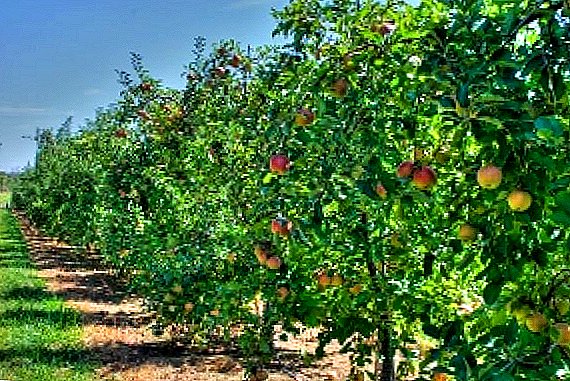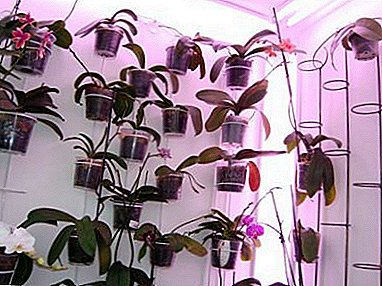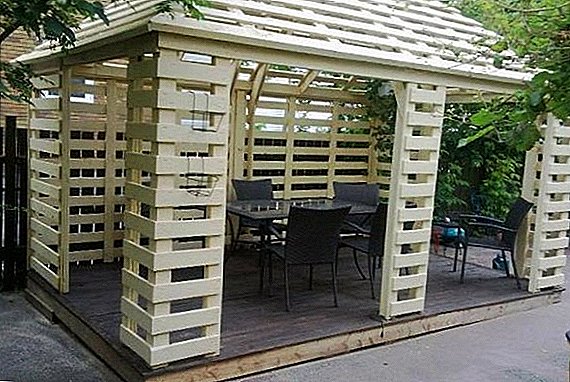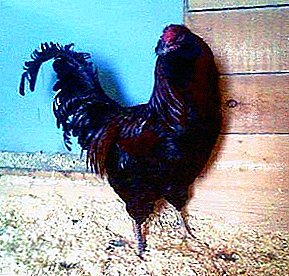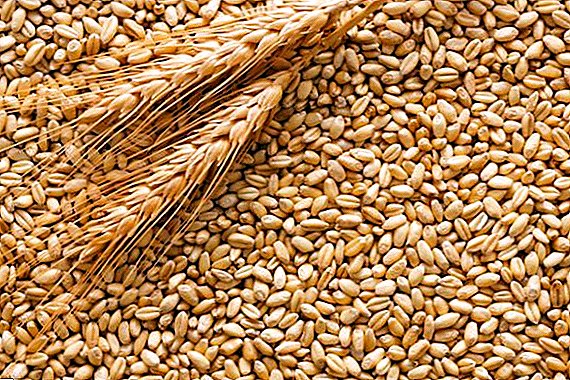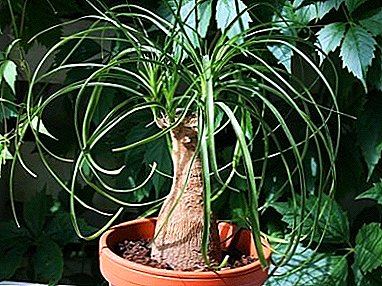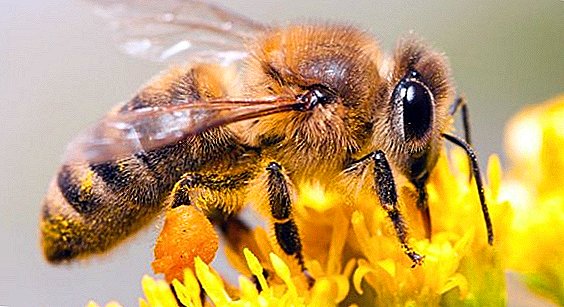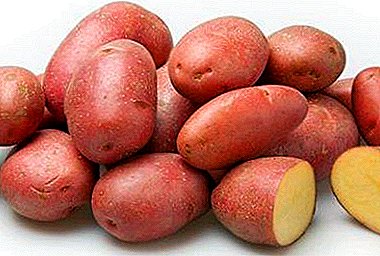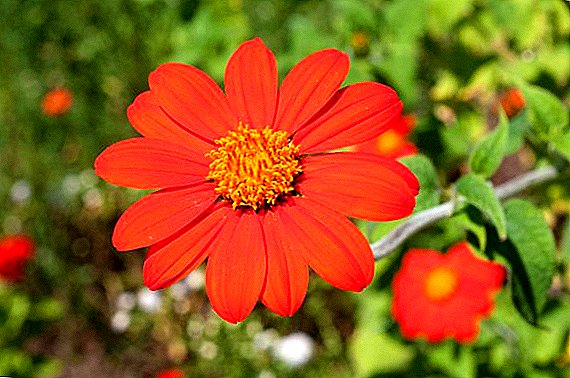 Planting spring flowers in our front garden, we do not think about their origin. For us, the main thing is how they complement the beauty of our site. However, it is very important to know more about them, because it will help ensure the proper care of them. One of these plants that have taken root in our climate is titonia. In this article we will tell you where she came from, how to take care of her, as well as possible difficulties that you may encounter in the process of growing.
Planting spring flowers in our front garden, we do not think about their origin. For us, the main thing is how they complement the beauty of our site. However, it is very important to know more about them, because it will help ensure the proper care of them. One of these plants that have taken root in our climate is titonia. In this article we will tell you where she came from, how to take care of her, as well as possible difficulties that you may encounter in the process of growing.
Botanical description
Tithonia is a representative of the Astrov family. Bright shrubs are very attracted to amateur flower growers, but it has not yet gained wide popularity in our regions. The plant is a herbaceous type.
The most widespread is the Mexican sunflower, the botanical name of which translates as round-leaved titony (Tithonia rotundifolia). This name is justified by bushes with leaves of a round shape.  Tithonia has large bushes that can reach up to 2 meters high and about 1.5 meters wide. Lush shape of the bush retains its greens until frost. The crown is formed by large leaves of rich green color. The leaves are alternately arranged on red shoots that hide under lush greenery.
Tithonia has large bushes that can reach up to 2 meters high and about 1.5 meters wide. Lush shape of the bush retains its greens until frost. The crown is formed by large leaves of rich green color. The leaves are alternately arranged on red shoots that hide under lush greenery.
Numerous shoots form a spherical crown on which flowers are located. Inflorescences bloom not only on the top of the peduncles, but also in the leaf axils.
Did you know? The Russian name sunflower arose because of the ability of the inflorescences of the plant to always turn towards the sun. This phenomenon has the scientific name heliotropism.
In appearance, the flowers resemble a sunflower, which is why the plant is often called the "Mexican sunflower". However, this is the only thing that combines titony and sunflower. The buds have a more daring look, and the petals have a completely different structure.  The color of the flower can vary from yellow to reddish depending on the variety. Its diameter can reach 8 cm, although some varieties have flowers, the diameter of which does not exceed 5 cm. The reed petals of titonium are arranged in one row and have a larger shape, while the small tubular ones are located tightly to each other.
The color of the flower can vary from yellow to reddish depending on the variety. Its diameter can reach 8 cm, although some varieties have flowers, the diameter of which does not exceed 5 cm. The reed petals of titonium are arranged in one row and have a larger shape, while the small tubular ones are located tightly to each other.
The shape of the titony petals distantly resembles dahlia. The color of the tubular petals is different from the reed and has a lighter shade, which makes the flower more colorful and vibrant. Peduncles in titonia have a large and massive structure.
Many growers fell in love with this plant due to its lush form and long flowering period. Titonia blooms from June to October.
Important! The excess fertilizer can contribute to the violent development of greenery and reduce the number of peduncles.
Distribution and habitat
Homeland titonia - Mexico, where she is a perennial plant. For the first time this flower was brought to the territory of Europe by the Spanish conquistadors, they were amazed by its beauty.  It became widespread in Mexico, the southwestern United States and Central America. In these areas, titonia has more than 10 different varieties.
It became widespread in Mexico, the southwestern United States and Central America. In these areas, titonia has more than 10 different varieties.
At home, where the climate is tropical or subtropical, the flower is considered to be perennial. However, in temperate latitudes of Europe, it most often grows as an annual plant. If you want to enjoy them for years, then you should grow titony in a pot.
Thus, the flower will delight you for several years and not only in the warm season, but also in the winter, well complementing your interior. And with the onset of warm spring days it can be taken out on the terrace and in May enjoy its aroma.
Popular varieties of titonia
This flower has more than 10 species, but in our latitudes the titony has a wide distribution. Most of the varieties known to the modern world are bred by the breeders from this particular plant species.
Did you know? An unusual and beautiful flower is named after the son of the king of Troy - Tithon, who was the favorite of the goddess of the dawn of Eos.The most popular varieties of titonia are:
- "Red Lantern" - is very popular and is a volumetric bush, whose height can reach 1.5 meters. It is covered with many large flowers with a brick-terracotta or bright orange color. The shape of the flower is very similar to chamomile, but it is much larger than it;
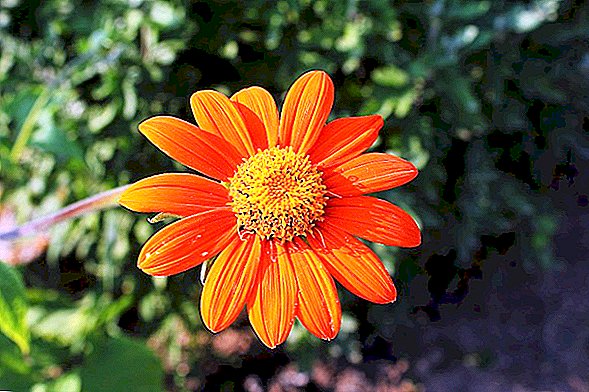
- "Torch" - this grade of titonia got its name due to fiery-red flowers. His bush grows one and a half meters. If you look at a plant from afar, it seems that it is burning;

- Yellow Torch - Unlike the previous variety, the bush rises only 1.20 m from the ground, and its flowers are yellow and smaller;

- "Fiesta del Sol" - The name of this titony in translation from Spanish means “sunny evening”. The bushes do not exceed 50 cm and are covered with small flowers of orange shade;
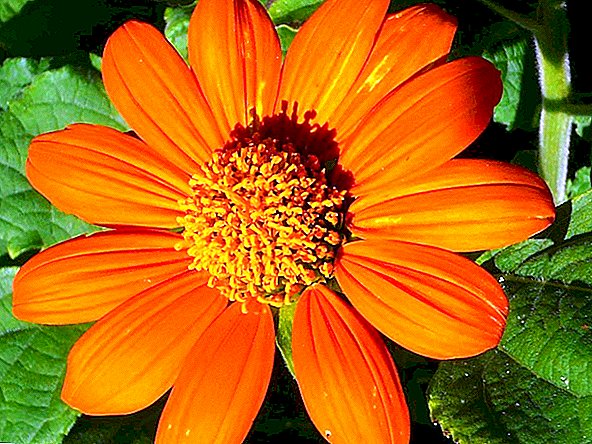
- titonia "Iliad" - herbaceous plant with branched stems, grows up to 1 m. Leaves have a heart-shaped form, and inflorescences-baskets resemble non-double dahlia. The diameter of the inflorescence reaches 5-6 cm. Large reed petals have a bright red color, and tubular - an orange-yellow shade. It pleases the eye all summer for its numerous colors. It can be used as a separately growing flower or as a group composition;
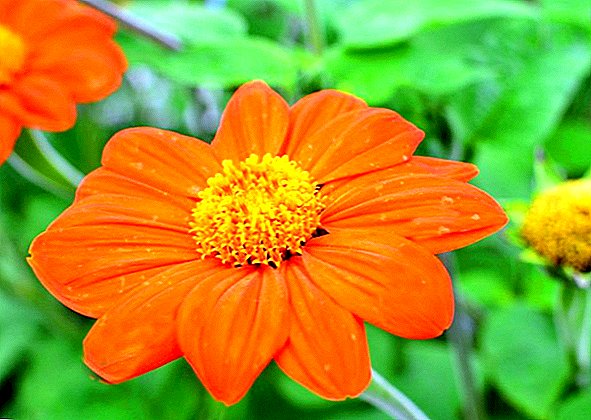
- titonia "Odyssey" - very similar to titonia "Iliad", but its bush grows no more than 70 cm.
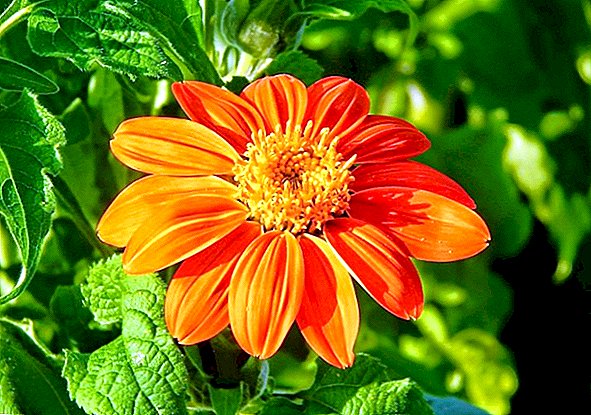
Use in landscape design
Due to the long flowering, bright colors and ease of care, titonia deservedly took its place in landscape design. Having a bright image, it contrasts well against the background of paler plants and stands out against the background of lawn grass or ground covers.
Using it, you can very well complement the beauty of your front garden, and, most likely, it will rise above its neighbors.
You will probably be useful to learn how to beautifully arrange the front garden with your own hands.
With the help of titonia, you can well disguise or decorate the base of the wall or fence. Some growers thus mask the compost pile or hatches. Also titonia well fill the voids in your area and will look beautiful even in a pot to decorate the recreation area, veranda or terrace.
The use of this flower in the design of the site will allow not only to enjoy the beautiful plant with bright flowers, but also butterflies, which it attracts with its appearance.  If you use titonia to create flower arrangements in flower beds, you should take into account its combination with other plants. It looks perfect with marigolds, sage, lupine, cornwood, cochia and vervain.
If you use titonia to create flower arrangements in flower beds, you should take into account its combination with other plants. It looks perfect with marigolds, sage, lupine, cornwood, cochia and vervain.
Growing at home
This plant is the best option for novice gardeners or those who do not have much time to care for a flower garden. In the care of titonium unpretentious, but still worth paying special attention to the conditions for its cultivation.
Conditions of detention
Titonia, coming from a subtropical, tropical climate, especially loves the sun. The most attractive are the flowers that grow in the area covered with sunlight, and even strong heat will not interfere with the growth of this plant. In connection with this feature, it is worth planting titonium in a flower bed well lit by the sun.
As well as titonia, the sun-loving plants also include: verbascum, veronica, gaillardia, carnation and delphinium, for which a large amount of sunlight creates good conditions for growth.
Mexican sunflower does not like drafts, so you should not plant it on the site where the wind freely walks. It is best to find a place near a wall or hedge, then it will grow without fear of a draft, while delighting you with its beautiful flowers.  Very often, titonia is called a flower for the lazy, as it requires minimal care. However, the flower does not tolerate cold and rainy weather. In such conditions, it grows slowly and may even not bloom at all. Therefore, when planting should take into account such a feature.
Very often, titonia is called a flower for the lazy, as it requires minimal care. However, the flower does not tolerate cold and rainy weather. In such conditions, it grows slowly and may even not bloom at all. Therefore, when planting should take into account such a feature.
Soil and fertilizer
In order to flower regularly and abundantly pleased with its variegated flowers, you should pay special attention to the soil. Better all is suitable nutrient enough friable soil, which will have good drainage.
However, if you plant titony in the barren land, you can grow a lush and beautiful plant with regular feeding. In this case, you should make a complex mineral or organic fertilizer once every three weeks.
To enrich the soil and nourish the plants, use organic fertilizers: straw, pigeon droppings, florex granulated chicken droppings, bone meal, fish meal, whey, potato peel, compost, eggshell, banana peel fertilizer and tobacco dust.
When the first leaves appear, it is necessary to fertilize the soil around the titony with a mullein. In the period of budding in the soil it is better to add ash. Once again fertilizers are applied during the period of active flowering. For this it is better to use a complex mineral fertilizer or mullein.  It is better to cover the soil around the shrub with a layer of mulch consisting of grass, humus or compost. Thus, the moisture will evaporate more slowly, and the plant will receive additional feeding.
It is better to cover the soil around the shrub with a layer of mulch consisting of grass, humus or compost. Thus, the moisture will evaporate more slowly, and the plant will receive additional feeding.
Watering and moisture
Like any tropical climate, titonia tolerates short periods of drought quite well. And watering is better to ensure it is minimal. But the plant is also not poured, it leads to stagnation of water and the decay of the root system and further death.
Familiarize yourself with the advantages of using drip irrigation, as well as learn how to organize a system of drip irrigation at the dacha.
Humid air flower transfers very bad, but it can be periodically sprayed from a spray. This will bring down the dust from the leaves and will be a good prevention of aphids. Also during the formation of buds and flowering, you can spray the mineral solution, which will favorably affect the size of inflorescences and their color. 
Breeding
Tithonia multiplies with the help of seeds, from which the seedlings first grow, and when it gets stronger, you can plant it in open ground. In late March - early April, begin planting seeds in a pot of fertile soil. Seeds have an elongated shape, large size (approximately 1 cm) and a rough surface. When landing between them keep a distance of 10-15 cm.
The seeds deepen slightly in the ground, and a small layer of earth is applied on top. Tray with seedlings put on a sunny window, where you can keep the air temperature at + 18 degrees. Seedlings periodically watered, while not allowing the ground to dry out.
Important! If you soak the seeds in wet tissue for 3-4 days, then titonium grows better and faster.
Seedlings sprout evenly, and after the appearance of several leaves, they can be transplanted into separate pots. Such a transplant will allow to adapt titony to a gradual decrease in temperature. It is better to plant it in open ground before the budding period, namely at the end of May.  When planting titonia, if it is part of the composition or decoration of a hedge, it is necessary to maintain a distance of 50 cm or more between the seedlings. This is due to the fact that over time it will grow and occupy all the free space. Soil before planting must be loosened and fertilized with compost, also do not forget about the drainage.
When planting titonia, if it is part of the composition or decoration of a hedge, it is necessary to maintain a distance of 50 cm or more between the seedlings. This is due to the fact that over time it will grow and occupy all the free space. Soil before planting must be loosened and fertilized with compost, also do not forget about the drainage.
Relation to temperature
This flower loves warm, and sometimes even a hot climate, so the temperature should be high enough. Therefore, the best place for titonia will be the sun.
At home in a tropical and subtropical climate, it can safely endure the winter. However, in our latitudes, winter frost can be disastrous. In this regard, the plant is often one-year. In regions where the winter is warm enough and there is no severe frost, titonia can overwinter, while it is not covered for the winter period.
In addition to titonia, frost-resistant plants are also: lilac, white deren, barberry, mountain ash, viburnum and wild cherry.
Possible difficulties in growing
In order for titonium not to sow itself, it is necessary to cut the inflorescences that have already faded. Harvesting material for planting begins in late September or in October. At this time, very carefully cut off the heads of the buds so as not to scatter the seeds.  Boxes with seeds laid out on a flat surface and give them the opportunity to dry. Crumbled seeds are collected in a rag pouch or paper envelope, and thus stored until spring.
Boxes with seeds laid out on a flat surface and give them the opportunity to dry. Crumbled seeds are collected in a rag pouch or paper envelope, and thus stored until spring.
Important! The best place for breeding young seedlings of titonia is a greenhouse or greenhouse, as they can create optimal conditions for the germination of young and fragile seedlings.
Titonia does not need a garter. However, if it grows as a single flower, then it is better to tie it up. This will protect the plant from brittle stem. 
Pests, diseases and prevention
Tithonia has good immunity to various diseases and parasites. However, it can also be adversely affected by some pests. For example, in wet weather, it is attacked by slugs that eat lush greens.
Another danger for titony is aphid, which, settling on the back of the leaf, gradually sucks all the vital sap from the plant. Get rid of unwanted neighbors will help decoction, which includes garlic, wormwood, chili pepper, tobacco, pine needles and onions. Special solutions can also be used, including soap.  Excessive moisture contributes to the formation of rot, which can hit the inflorescences. If any infected flowers or buds are found, they must be removed immediately. Otherwise, the disease will develop rapidly and lead to the death of the plant.
Excessive moisture contributes to the formation of rot, which can hit the inflorescences. If any infected flowers or buds are found, they must be removed immediately. Otherwise, the disease will develop rapidly and lead to the death of the plant.
Tinonia is a plant that can decorate any plot, and even a novice grower can grow it. Also with its help you can create a hedge or decorate an unsightly extension.
Tithonia will please you not only with a large number of flowers, but also with beautiful butterflies, which it attracts. Mexican sunflower is becoming an increasingly popular plant in our flowerbeds, and it is deserved, because it is so unpretentious.








